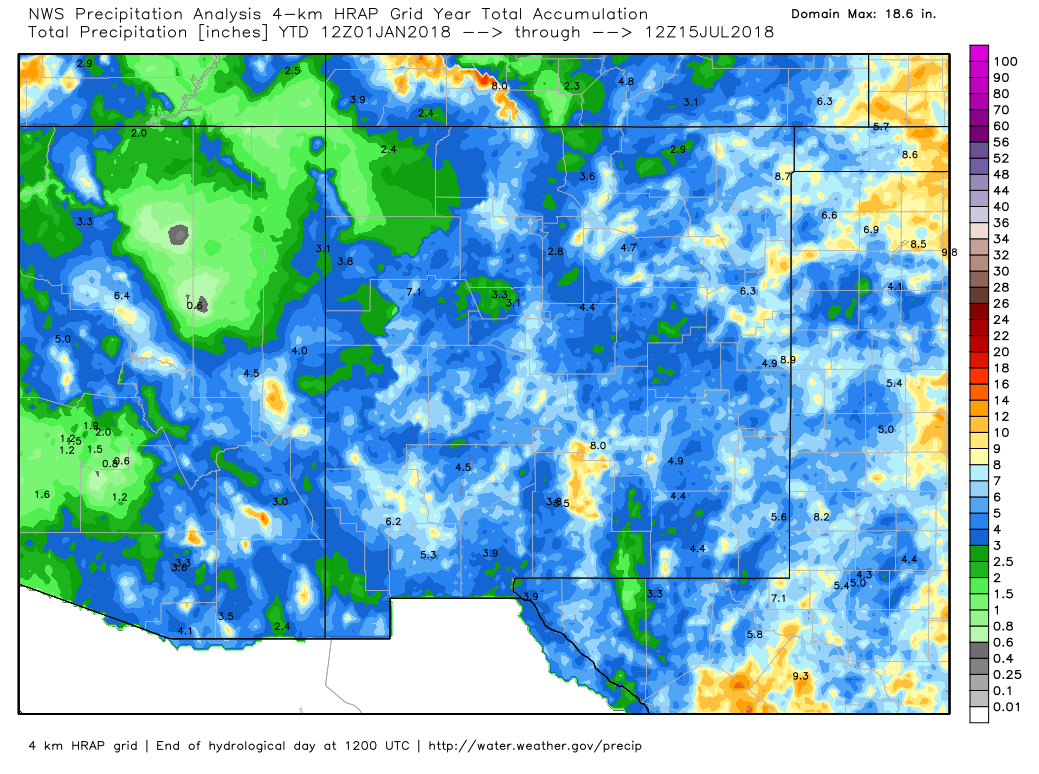
But the rawer data is often safer and more easy to work with. Or writing some sort of script could save a lot of time if you're downloading a lot of data. If you're trying to accomplish all this in Excel, some formulas could be worked up to automatically take what you need from the day's data, or you could use a regex in any of the variety of online regex testers. Just add the four of those up, and you'll have the daily total. Or, even better, just look for the 6**** fields right about the end, which are the 6 hour total precipitation.
#Local precipitation totals full
I believe typical full data should have METAR or SPECI in it to indicate which obs you want?īut no big deal, if you look back at the rawer-looking data you gave, looks like you can find which ones you want by looking for the ones with SLP reported right about the end. I didn't get a chance to look too closely, but looks like all of these are unfortunately altered forms of the data. so would be reflected in the 751 ob (which is indeed higher). On the other hand, the 659 ob being smaller than the 651 ob makes sense. you just use the 0.24 from 2149, and it should include the others in it (so skip the others that would lead to double-counting).

The other reports you're seeing are generally subops (SPECIs) which generally only report precip since the last ob given, but the total of which should always be reflected in the hourly. Typical synoptic (hourly) obs come in about 51 past the hour (sometimes a couple minutes off). Using the algorithm above with the ASOS data for the same days yields 0.11, 0.96, 0.10, 3.32, 0.80. Precipitation totals are accumulated to 51 minutes each hour.

The day is measured from midnight to midnight local time, without a DST adjustment.I have an algorithm that (almost!) works. What exactly is being reported here?Įdit #2: confirms the importance of 51 minutes past the hour. Note that the value of p01i at 6:59 (0.01") is less than that at 6:51 (0.05"), and greater than that at 7:40 (0"), which in turn is less than that at 7:51 (0.09"). The general questions are: a) how does one parse the p01i column, and b) should it be possible to use ASOS precipitation data to match official NWS totals? Thanks!Įdit: See below. Does that 0 denote a reset prior to 51 minutes, implying a total of 0.45" for that hour? Or does it indicate something else, such as a temporary cessation? What do I do with hour 21, which reports 0.21" at 36 minutes, 0 at 48 minutes, and 0.24" at 49 minutes.
#Local precipitation totals how to
But I am unsure how to interpret certain cases. It appears that rainfall totals are cumulative and reset hourly at 51 minutes (see hours 12 and 13 EDT for example). An excerpt of the ASOS data covering June 7 is below.

I am assuming that the definition of a day is midnight to midnight, local time.įor example: KLGA had a record rainfall total of 3.33" on June 7, 2013. Using ASOS, I am unable to match the official NWS totals. I would like to use ASOS data from Iowa State University to compute daily rainfall totals for specific locations.


 0 kommentar(er)
0 kommentar(er)
